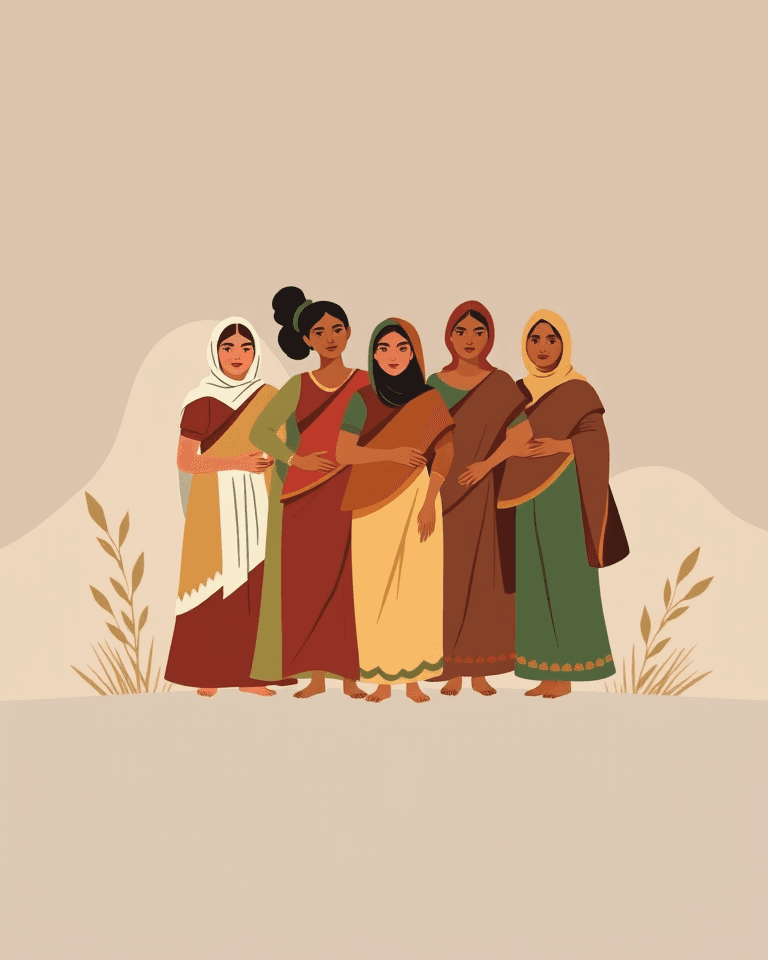Self-Help Groups (SHGs) have emerged as a transformative force in rural India, fostering economic empowerment and social change, particularly for women. These grassroots organizations, typically comprised of 10-20 women from similar socioeconomic backgrounds, operate on the principles of mutual help and collective action. SHGs have become instrumental in providing access to financial services, promoting skill development, and empowering women to take control of their lives.
The Genesis and Evolution of Self-Help Groups in India
The roots of the SHG movement in India can be traced back to the establishment of the Self-Employed Women’s Association (SEWA) in 1972. This organization demonstrated the potential of organizing women workers in the unorganized sector to improve their incomes. The concept gained further momentum in 1992 with the launch of the SHG Bank Linkage Project by the National Bank for Agriculture and Rural Development (NABARD), which allowed SHGs to open savings accounts in banks and access credit. This initiative is recognized as the world’s largest microfinance project. The Swarn Jayanti Gram Swarozgar Yojana, introduced in 1999, aimed to further promote self-employment in rural areas through the formation and skilling of SHGs. This evolved into the National Rural Livelihoods Mission (NRLM) in 2011, solidifying the role of SHGs in the government’s rural development agenda.
How Self-Help Groups Function
SHGs are self-governed and peer-controlled entities. Members meet regularly, usually weekly, to pool their savings. These pooled resources are then used to provide small loans to members, often for income-generating activities. The group collectively decides on loan terms, interest rates, and repayment schedules. The success of this model hinges on mutual trust and responsibility, with members supporting each other in loan recovery. SHGs also serve as platforms for discussing and addressing social issues, including health, nutrition, and domestic violence.
The Multifaceted Impact of Self-Help Groups
SHGs have had a profound impact on the lives of rural women and their communities:
Economic Empowerment
- Financial Inclusion: SHGs facilitate access to formal financial systems for the poor, who often lack collateral and are excluded from traditional banking. They encourage a culture of saving, enabling members to build financial resilience.
- Micro-Credit: SHGs provide micro-loans to their members, which can be used to start or expand small businesses. This has helped women become self-employed entrepreneurs, increasing their income and financial independence.
- Reduced Dependence on Informal Lenders: By providing access to formal credit, SHGs reduce the influence of exploitative informal lenders, who often charge exorbitant interest rates.
Social Empowerment
- Women’s Empowerment: SHGs empower women by providing opportunities for leadership, skill development, and decision-making. They offer a platform for women to voice their concerns and participate in community affairs.
- Increased Social Capital: SHGs foster a sense of community and social integrity. They help eradicate social ills such as dowry, alcoholism, and early marriage, as women collectively challenge these issues.
- Enhanced Decision-Making Power: Through SHGs, women gain greater control over their income and decision-making authority within their households and communities.
Skill Development and Entrepreneurship
- Training and Capacity Building: SHGs often provide training in various skills, such as tailoring, food processing, handicrafts, and agriculture, enhancing their members’ employability and entrepreneurial potential.
- Micro-Enterprises: SHG members engage in various micro-enterprises, becoming entrepreneurs in their own right. This contributes to economic growth and poverty reduction in rural areas.
- Market Access: While a challenge, some SHGs have been successful in linking their products to markets, ensuring sustainable growth and income generation.
Government Support for Self-Help Groups
The Indian government actively supports SHGs through various programs:
- Deendayal Antyodaya Yojana-National Rural Livelihoods Mission (DAY-NRLM): This mission aims to mobilize rural poor households into SHGs and provide them with long-term support to diversify their livelihoods, improve their incomes, and enhance their quality of life.
- Mahatma Gandhi National Rural Employment Guarantee Act (MGNREGA): SHGs are often involved in the implementation of this act, contributing to rural employment and development.
- Pradhan Mantri Formalization of Micro Food Processing Enterprises (PMFME) Scheme: This scheme supports micro-food processing enterprises, often run by SHGs, providing them with seed capital and resources.
Success Stories of Self-Help Groups
Numerous success stories demonstrate the transformative potential of SHGs:
- Lijjat Papad: Started by seven women in 1959, Lijjat Papad has become a household name, empowering thousands of women through employment in papad-making.
- Chamoli Self Help Groups: Women in the Chamoli district near Badrinath temple have gained recognition for making and selling prasad using locally grown ingredients, earning substantial profits.
- Green Himalaya Self Help Group: This group in Udhampur district has created a brand by producing value-added products from fruits and vegetables.
- Siba Baba Brahma Kumari SHG: This Odisha-based group has achieved success in turmeric production, aided by government support and their ability to procure necessary machinery.
- Jingiatylli Self Help Group: This group in Meghalaya has enabled women like Littleda Rani to establish their means of livelihood through financial support from their SHG.
These stories exemplify how SHGs can foster economic independence and empower women to take control of their lives.
Challenges Faced by Self-Help Groups
Despite their successes, SHGs face several challenges:
- Limited Access to Markets: Only a small percentage of SHGs are linked to markets for their products, hindering their growth and sustainability.
- Lack of Financial Literacy: Many SHG members lack financial literacy and access to formal financial institutions, limiting their ability to manage their finances effectively.
- Digital Divide: The lack of technological access and know-how can be a barrier for SHGs, particularly those in remote areas, as the world increasingly moves towards digital transactions.
- Sustainability Issues: Some SHGs face challenges in maintaining their long-term functionality due to mismanagement of funds, lack of accountability, and commitment.
- Identification of Beneficiaries: Including the poorest of the poor in SHGs remains a challenge.
- Training and Skill Upgradation: There is a need for appropriate training plans, quality training, and expert training institutions for SHG members.
- Socio-structural challenges: These groups also grapple with challenges stemming from financial, entrepreneurial, and group dynamics.
The Road Ahead for Self-Help Groups
To enhance the effectiveness and sustainability of SHGs, several key areas need to be addressed:
- Strengthening Market Linkages: Connecting SHGs to markets is crucial for their long-term viability. This requires creating platforms for product marketing and branding.
- Enhancing Financial Literacy: Providing financial literacy training to SHG members will help them manage their finances effectively and make informed financial decisions.
- Bridging the Digital Divide: Efforts must be made to provide technological access and training to SHG members, enabling them to use digital platforms for financial transactions and market access.
- Capacity Building: Strengthening the managerial capacity of SHGs through training and mentorship programs is vital for their sustainability.
- Monitoring and Evaluation: Regular monitoring and evaluation of SHGs are necessary to ensure their effective functioning and address any challenges promptly.
- Promoting Diversification: Encouraging SHGs to diversify their activities and explore new income-generating opportunities can help them achieve sustainable economic growth.
- Fostering Local Partnerships: Policy-level support can help foster local partnerships and community initiatives, leading to better service delivery in villages.
The Future of Self-Help Groups
As India moves forward, SHGs are expected to play an increasingly significant role in rural development, poverty alleviation, and women’s empowerment. Their ability to act as a bridge to formal financial systems, their deep understanding of local needs, and their focus on collective action make them a valuable asset for the country’s socio-economic progress. By addressing the challenges they face and capitalizing on their strengths, SHGs can continue to empower rural women, uplift communities, and contribute to a more inclusive and equitable future. The self-help group approach is evolving towards greater impact and sustainability by promoting ownership and shared investment among members, making them an essential component of rural development. These groups, with their demonstrated success, are not just a local phenomenon; they are a powerful model that can be replicated in other developing nations to combat poverty and drive sustainable development.










